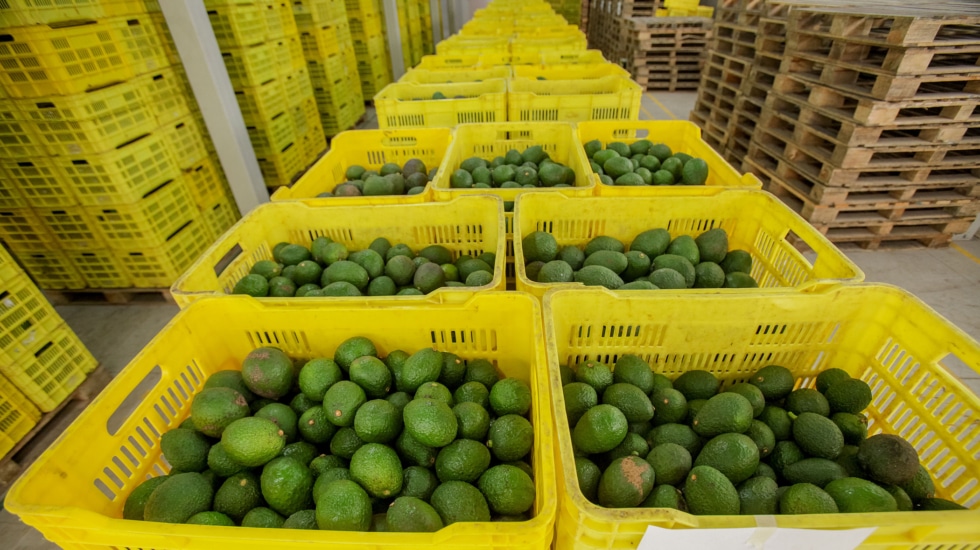

Avocado packaging plant in Mexico City (Mexico).
The start of the avocado campaign 2023/2024 is exhausting its prolegomena. A week before December, Valencian producers have already harvested their first fruits of “acceptable quality and at a reasonable price”; while Andalusian farmers, mainly from Malaga and more precisely from Axarquia, await the harvest of bacon, the earliest variety, with certain doubts: “We are still thinking about it.”
Andalusia and the Valencian Community have different expectations for the Hass harvest, 90% of the avocado production grown in Spain and which under normal conditions lasts from December to May. On the one hand, Benjamin Fauli, head of the tropical fruit department of ASAJA Málaga, notes in a conversation with Independent difficulties caused by drought: “If it doesn’t rain, a very important part of the production may be lost.” On the other hand, Celestino Recatala, president of ASOPROA (Valencia Avocado Producers Association), approaches the harvest from a different point of view: “Our advantage is that here we have not suffered anything due to water.”
The situation with avocado trees in the province of Malaga, which accounts for 40.1% of the total area of this tropical tree in Spain, is beyond worrying. The lack of rain has forced restrictions and water bans to reduce water consumption by 20% in the Axarquia region, so the situation in rural areas is very delicate. The Malacitana marshes are 18.3% full. La Viñuela, the reservoir that irrigates the Axarquia River, has been hit hardest by the drought as its capacity is at 7.6%, resulting in reduced flows.
“There are more connections to pull water from above because there is more dirt below than anything else, and because of that you can’t irrigate,” explains Fowley, who is looking to implement methods to extract liquid elements while precipitation falls. does not accompany: “We should try to improve the existing treatment systems so that the water is cleaner, or wait for the infrastructure to be expanded. Thinking about transferring seems impossible, let’s see from where. Imagine going to the Iznajar reservoir (Córdoba) and asking for water, they come out with shotguns and machine guns, because they feel as bad there as we do.
Using purified water is not a solution for irrigators in Malaga. It’s desalinated water that comes from the sea, “and there’s quite a lot of leakage and salt seeping in, which is bad for avocados,” says Fowley, who notes that in the medium term, “all the salts accumulate in the water.” years and can cause soil degradation, leaving us with very poor quality soil that will have to be rebuilt over time.
Avocado bubble burst?
The difficulties faced by avocado growers during recent campaigns have brought their activities into the spotlight. The penultimate campaign in Malaga was bad, the last was even worse, and the next one is waiting for rain to save all possible plantations. “People need to know that irrigated land is what it is and you can’t grow avocados everywhere, so you can never talk about an avocado bubble,” Fowley says.
The avocado dominates the tropical fruit market. Its cultivation in Spain has increased markedly in recent years, driven by growing demand both nationally and internationally. According to the Ministry of Agriculture, Fisheries and Food, the country’s area devoted to avocado cultivation is 19,519 hectares, of which 99.29% is irrigated (19,381 hectares) and 0.71% is rain-fed (138 hectares).
From 2011 to 2020, the area under avocado cultivation in Spain increased by 50.1%. He boom Avocado has transformed the fruit from an alternative crop into one of the largest businesses in rural areas. Many citrus growers want to follow a path that will provide more stability to their lands, without the ups and downs typical of their traditional production; However, this expansion is geographically limited by climate. Avocado, like a tropical fruit, is killed by wind and frost.
The Valencian Community, the second region with the largest avocado area in Spain (2,310 hectares), has increased its acreage by 250 hectares per year over the past two years. “All of the new avocado acreage is an alternative to citrus, which is irrigated throughout its life and has the same water requirements: 5,500 cubic meters of water per hectare per year,” explains Rekatala.
Advertising the product, as well as disseminating and demonstrating the nutritional and health benefits of avocados, captivated the public. Over the past decade, its consumption has increased by more than 1000%, an average of 1.5 kg per person per year. Spain only supplies 10% of Europe’s demand for avocados, and more and more people are looking to get into the agricultural goldmine. “Our competition has doubled in the last five years,” adds Rekatala, who insists that to reach as many audiences as possible, “continuous improvement and professionalization of the entire network and the industry as a whole is necessary.”
Fauli, head of tropical fruits at ASAJA Málaga, says: “There is no water for citrus fruits, eggplants, peppers or avocados. There aren’t many trees, simply because it’s not raining.”
Source: El Independiente